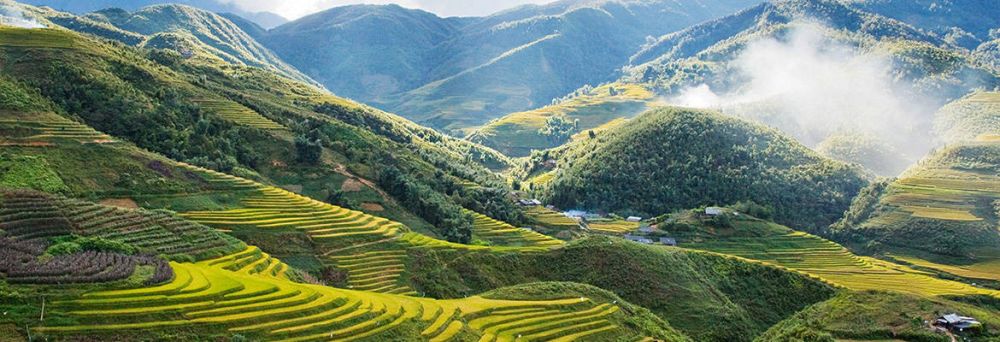

The Hoang Lien National Park, also known for its most prominent member, the Fansipan Mountain which is the highest in Indochina, lays the foundation for a rich history of tourism in the region of Sapa, Vietnam. With its lush landscapes, rich biodiversity, and cultural significance, it has become a focal point for travelers seeking adventure, nature, and cultural experiences.
The history of tourism in Hoang Lien National Park can be traced back to the French colonial era. The French colonists would often travel to Sapa, and the surrounding regions, to escape the tropical heat of the lower lands. During these times, Sapa was a hill station renowned for its cool climate and scenic beauty. However, it was not until the late 20th century that Sapa and its surrounding areas, including Hoang Lien National Park, started gaining popularity among international and domestic travelers.
It was in 2002 that Hoang Lien National Park was officially established to protect the diverse ecosystems of the Hoang Lien mountain range. Since its designation as a national park, it has become a magnet for eco-tourists and nature enthusiasts drawn to its unique flora and fauna, many of which are endemic to Vietnam.
In the early 21st century, the rise of eco-tourism and adventure travel led to an increase in the popularity of Hoang Lien National Park. The park's trekking routes, particularly the ascent to the peak of Fansipan, known as the "Roof of Indochina," became a rite of passage for many hikers and mountain climbers. The local government and tour operators developed infrastructure and tours that made the park more accessible while promoting sustainable tourism practices.
In recent years, the introduction of the Fansipan Legend Cable Car has transformed the tourism landscape of Hoang Lien National Park, making it possible for a wider range of visitors to experience the park's beauty without having to endure a rigorous trek. Alongside this, the development of luxury accommodations and increased marketing has positioned Sapa and Hoang Lien National Park as a premium destination for both nature and culture-focused tourism.
With the influx of tourists, there are challenges concerning environmental conservation and cultural sustainability. Efforts have been made to implement eco-friendly tourism initiatives that strive to protect the delicate ecosystems within the Hoang Lien National Park while maintaining the integrity of local cultures. Community-based tourism projects have also been introduced to ensure that tourism benefits are dispersed among the indigenous people.
The latest tourism trends in Hoang Lien National Park include an emphasis on sustainable travel and authentic experiences. Travelers are increasingly seeking homestays and guided tours by local ethnic minorities such as the H'mong and the Dao. This provides a more immersive cultural experience and directly supports the local communities. Additionally, adventure tourism continues to thrive, with visitors participating in trekking, climbing, and exploring the rich biodiversity of the park.
The splendor of nature, combined with the rich tapestry of culture found in Hoang Lien National Park and the region of Sapa, continues to captivate travelers from around the globe. As tourism evolves, the focus remains on creating a balance between exploring and preserving this magnificent part of Vietnam.